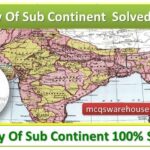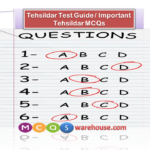ERP Enterprise Resource Planning
Enterprise Resource Planning
ERP Enterprise Resource Planning
1. Define ERP?
Enterprise Resource Planning (ERP) covers the techniques and concepts employed for the integrated management of businesses as a whole, from the viewpoint of the effective of management resources, to improve the efficiency of an enterprise.
2. What is an Enterprise?
An enterprise is a group of people with a common goal, which has certain resources at its disposal to achieve that goal.
3. What are the main misconceptions about ERP?
•First is that ERP is a computer system.
•Second is ERP is for manufacturing organizations alone.
4. What are ERP packages?
ERP packages are integrated (covering all business functions) software packages that support the ERP concepts. ERP software is designed to model and automate many of the basic processes of a company, from finance to the shop floor, with the goal of integrating information across the company and eliminating complex, expensive links between computer systems that were never meant to each other.
5. Who are the main players in the ERP market?
SAP AG, PeopleSoft, Oracle, Baan, JD Edwards, QAD, Ram co, IFS, Data Works etc.
6. When do the ERP system’s set of generic processes produce dramatic improvements?
ERP software is a mirror image of the major business processes of an organization, such as customer order fulfillment and manufacturing. Its success depends upon reach – a circumscribed ERP system isn’t much better than the legacy system it replaces of generic processes produce the dramatic improvements they are capable of, only when used to connect parts of an organization and integrate its various processes seamlessly.
7. What are the reasons for the explosive growth of the ERP market?
They enable improved business performance by achieving:
cycle-time reduction, increased business agility, inventory reduction, order fulfillment improvement etc.
They support business growth requirements.
Enterprise resource planning systems provide flexible, integrated, real time decision support.
ERP packages afforded by even small and medium sized businesses and offers increased functionality at a reasonable cost.
They help companies in supporting new products and new customers by meeting their global requirements, including multiple languages and currencies.
8. What are the direct benefits of ERP systems?
•Business Integration
• Flexibility
•Better analysis and planning capabilities
•Use of latest technology

Read Also:
Application Software Q&A For All Interviews
9. Why is it said that ERP systems are flexible?
Different languages, accounting standards can be covered in one system, and functions that comprehensively manage multiple locations of a company can be packaged and can be implemented automatically.
10. What is cycle time?
Cycle time is the time between receipt of the order and delivery of the product.
11. What is Business Integration and how do the ERP systems achieve it?
The reason why ERP packages are referred as being integrated is the automatic data updation.
12. What are the factors that are critical for the success of the ERP implementation?
•Selection of the right package
•Commitment of top management
•Participation and dedication of the system’s future users
•Backing, support and cooperation of the IS/IT personnel
•Development of interfaces with current operational systems and with those under development
•Effort of consultants, who have respect for the company’s know-how and work culture
• Spirit and collaboration on the part of all
13. How do conventional application packages and ERP packages differ?
•First, ERP packages cannot have only individual business functions such as accounts and inventory, but also the entire range of main business functions necessary for the company’s operations.
•Second, ERP packages are targeted at everything from small businesses to the largest organizations, and that they can be composed of a highly flexible decentralized database and an information system cluster linked by a network
•Third, is global adaptation, represented by ERP packages’ multilingual and multi-currency capacity.
14. What are the limitations of ERP?
Managers cannot generate custom reports or queries without help from a programmer and this inhibits then from obtaining information quickly, so that they can act on it for.
competitive advantage:
ERP systems provide current status only, such as open orders. Managers often need to look past the current status, to find trends and patterns that aid better decision-making.
The data in the ERP application is not integrated with other enterprise or division systems and does include external intelligence.
15. What Are Private clouds?
At the moment, many companies are mulling a conversion to cloud enterprise resource planning. Not all of them will go forward with such plans anytime soon, but there will come a time. when almost all information is remotely stored. There is a point of diminishing returns at which local storage becomes impractical and needlessly expensive, so it isn’t just ERP technology that will
exist in the cloud – it will be almost all of it.
Profile of the consultants:
Team with the resume of each member Consulting fee and payment details
Implementation methodology. Time schedule and the implementation budget
Terms and conditions of knowledge transfer and employee training List of deliverables (reports, manuals, knowledge bases etc) Project monitoring and status reporting systems.
17. What Is CLOUDCOMPUTING?
Cloud computing is the delivery of a software product to a user via the Internet. The user typically accesses the cloud product through a Web browser or a lightweight (meaning small and simple) application for a computer or mobile device. Cloud computing is not a completely new concept, rather it simply represents the latest stage of the development of computing and the Internet. To better understand how cloud computing will impact ERP system development; it is useful to review the development of SAP’s ERP systems with the advent of the Internet.
18. What Are SAP and the Internet?
In 1996, SAP introduced its joint Internet strategy with Microsoft. The core of SAP’s first effort to integrate the Internet with its products was the Internet. Transaction Server (ITS) a server-based software system enabled efficient communication between an SAP ERP system and the Internet. In 1996 Amazon.com established .
Many other Internet services also available and we take for granted today did not exist at this time.
In May 1999, SAP announced mySAP.com, a new strategy designed to completely realign the company and its product portfolio. The goal of this initiative was to combine e-commerce solutions with SAP’s existing ERP applications, using cutting-edge web technology In 2000.
Read Also:
Application Software Q&A For All Interviews





